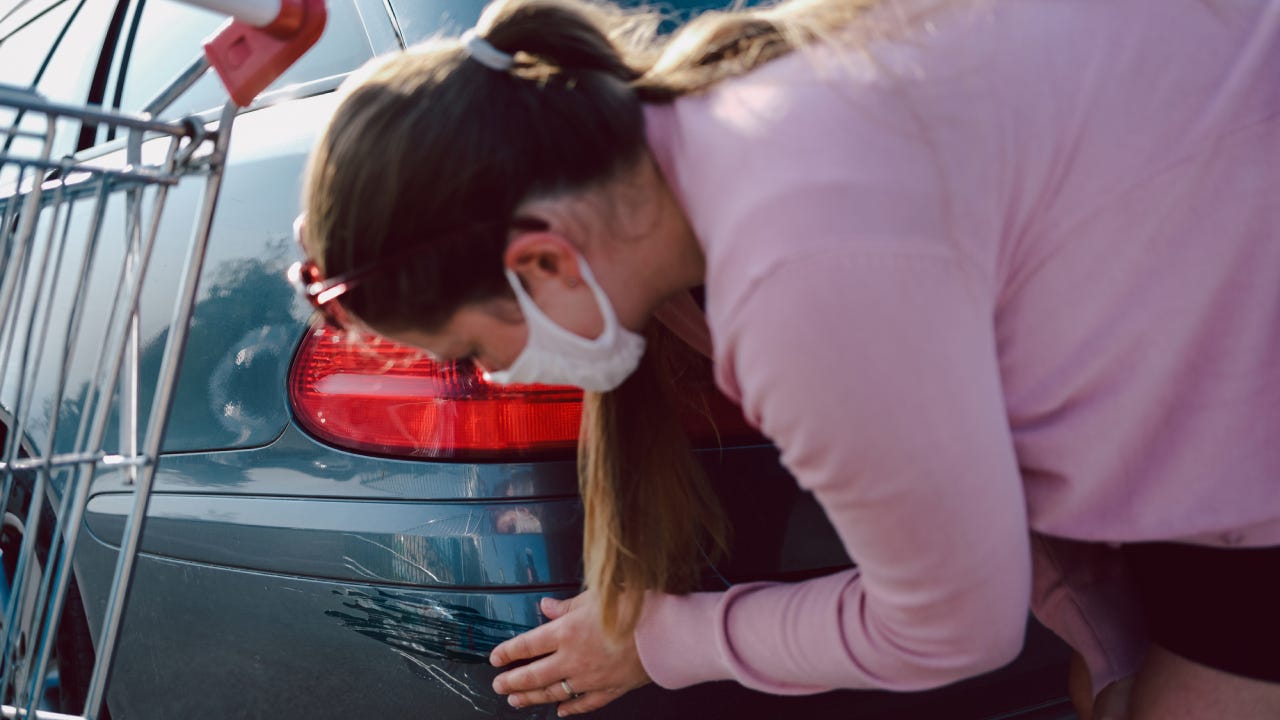What to do after a hit and run in New Jersey

Leaving the scene of a motor vehicle accident in New Jersey is a crime — but it’s an increasingly common occurrence in the Garden State. Failure to stop and provide insurance information could result in fines, license suspension or even jail time. Here’s what to know about New Jersey hit-and-run laws.
Hit and runs in New Jersey
So far in 2024, New Jersey has recorded 177 crashes and 185 fatalities. What’s more, data from the National Highway Traffic Safety Administration (NHTSA) shows that hit-and-run fatalities are on the rise nationally, especially for pedestrians. With hit-and-runs on the rise, it’s worth understanding the New Jersey laws that apply to this type of accident — and how your insurance could be affected.
Hit-and-run laws in New Jersey
New Jersey Revised Statute Sections 39:4-129 state that drivers who knowingly strike a person or property must immediately stop. In accidents where the injured party is present, each driver must share their name, address and license and registration with the injured party and with law enforcement, if present. If you hit an unattended vehicle and damage it, state law requires that you inform the owner through a conspicuous written notice that includes your name and address. If you’re unable to give your information directly to the injured party, you must inform the police promptly.
Those who don’t remain at the scene of the accident, exchange information, leave a note or inform police could be charged with a hit-and-run. The repercussions that follow will depend on the severity of the accident.
A New Jersey hit-and-run conviction could lead to a minimum fine ranging between $200 to $400 for a first offense, plus a potential driver’s license suspension. Each subsequent incident can carry a fine of $400 to $600. If someone was injured or killed, the driver might be charged with a third-degree felony and face imprisonment on top of a $2,500 to $5,000 fine.
All of this applies even if the driver claims they were not aware of any serious injury caused at the time of the incident. In addition to legal issues, a hit-and-run driver will likely have to pay higher auto insurance premiums once they’re permitted to drive again.
How does a hit-and-run affect car insurance in New Jersey?
Insurance companies base premiums on risk, and any driver with a hit-and-run accident on their record presents a serious risk to insurers. Depending on the circumstances, a hit-and-run could result in multiple marks on your record, including an at-fault accident and even a criminal conviction as serious as a felony if you caused a fatality.
Drivers with a single at-fault accident on their record pay an average full coverage car insurance rate of $3,348 per year. This is 50 percent more than the average premium for drivers with clean driving records. Being convicted of a hit-and-run in New Jersey will likely raise your car insurance rates more than a simple at-fault accident. Some carriers may consider drivers with hit-and-run convictions to be high-risk and refuse to insure them.
If you file an insurance claim with your own insurance company for damage caused by another driver who flees the scene, you’ll likely see an increase in your premiums, but usually not as severe as the surcharge caused by an at-fault accident.
What to do after a hit and run in New Jersey
Even the safest drivers may cause an accident. However, how you handle the situation could make all the difference between a standard accident and the more serious crime of leaving the scene. To avoid being charged with a hit and run, consider taking the following precautions:
- Stop immediately: New Jersey drivers who are involved in a collision are required by law to immediately stop. Leaving the scene may be classified as a hit and run.
- Check that everyone is safe: After stopping, drivers should find out if everyone is okay. If it is unclear whether someone may be hurt, stick around for emergency services and offer any reasonable assistance you can.
- Share your information: New Jersey state law requires that you share your name, address, driver’s license and vehicle registration with any injured parties. You should also share your insurance information.
- Document what happened: If there are no injuries or help is on the way, drivers should safely move to the side of the road to assess the damage, take photos and exchange information. Drivers who have damaged the property of someone who is not present should leave their contact information with a brief explanation of what happened.
- Call your insurance carrier: After any accident, drivers should call their New Jersey insurance company right away. Doing so before leaving the scene may make it easier to provide detailed information while it is still top of mind. Send photos, as well, to show the extent of the damage.
Frequently asked questions
Methodology
Bankrate utilizes Quadrant Information Services to analyze April 2024 rates for all ZIP codes and carriers in all 50 states and Washington, D.C. Rates are weighted based on the population density in each geographic region. Quoted rates are based on a single, 40-year-old male and female driver with a clean driving record, good credit and the following full coverage limits:
- $100,000 bodily injury liability per person
- $300,000 bodily injury liability per accident
- $50,000 property damage liability per accident
- $100,000 uninsured motorist bodily injury per person
- $300,000 uninsured motorist bodily injury per accident
- $500 collision deductible
- $500 comprehensive deductible
To determine minimum coverage limits, Bankrate used minimum coverage that meets each state’s requirements. Our base profile drivers own a 2022 Toyota Camry, commute five days a week and drive 12,000 miles annually.
These are sample rates and should only be used for comparative purposes.
Incidents: Rates were calculated by evaluating our base profile with the following incidents applied: clean record (base) and at-fault accident.
You may also like


Should I sell my house now or wait?

Does car insurance cover engine failure?



